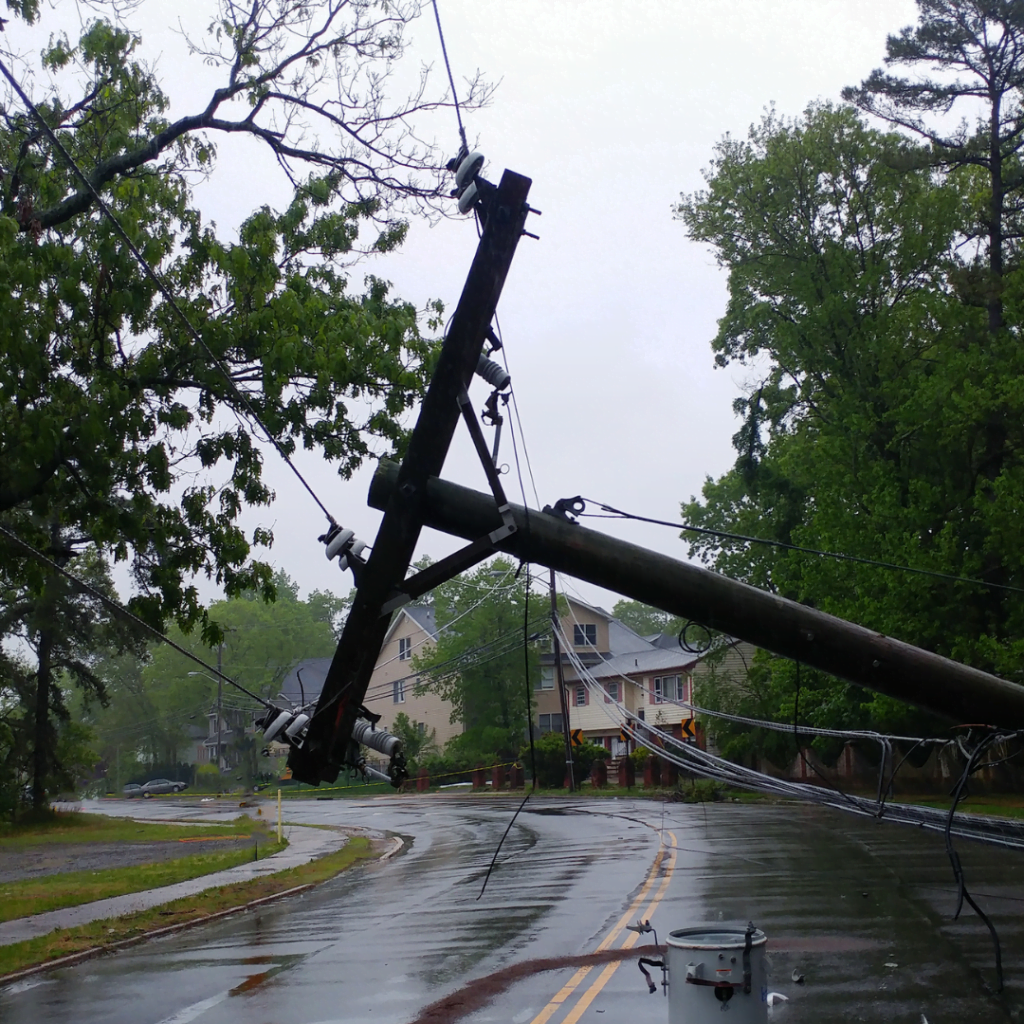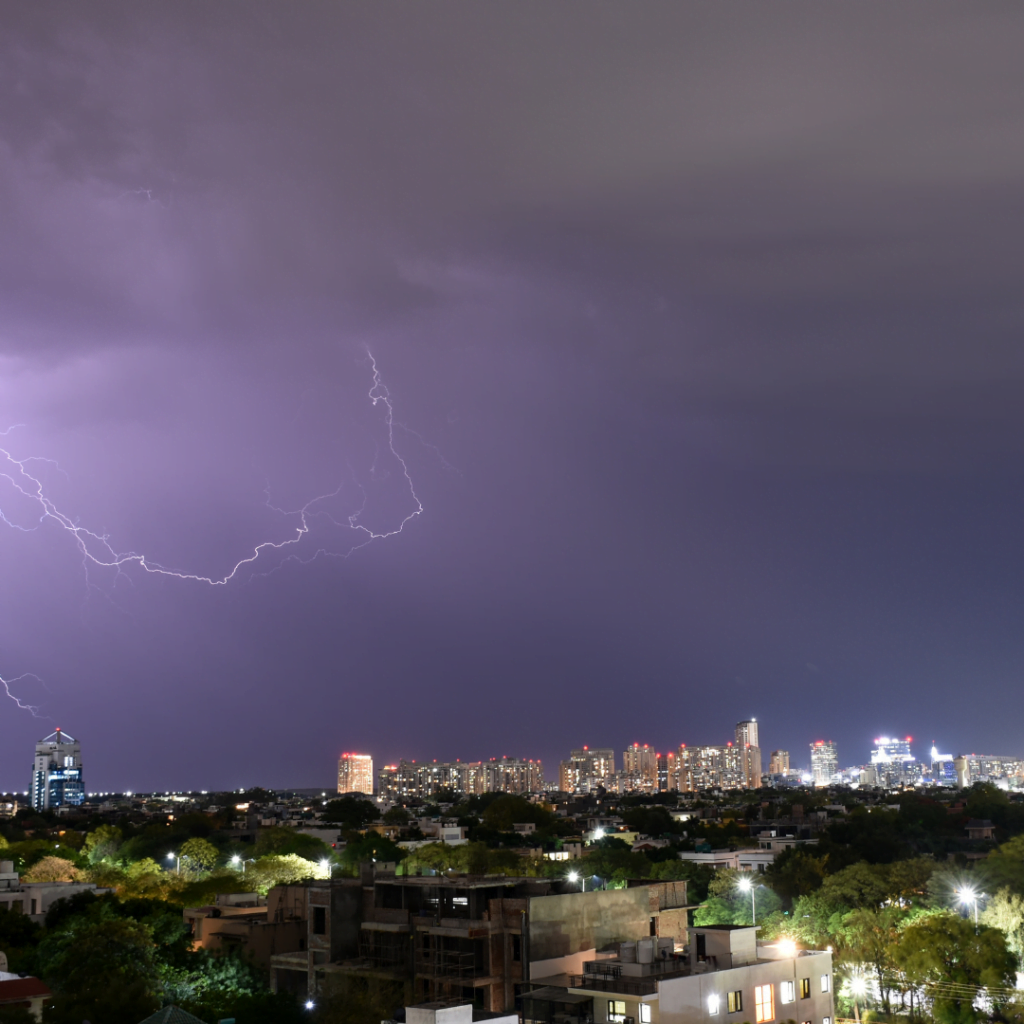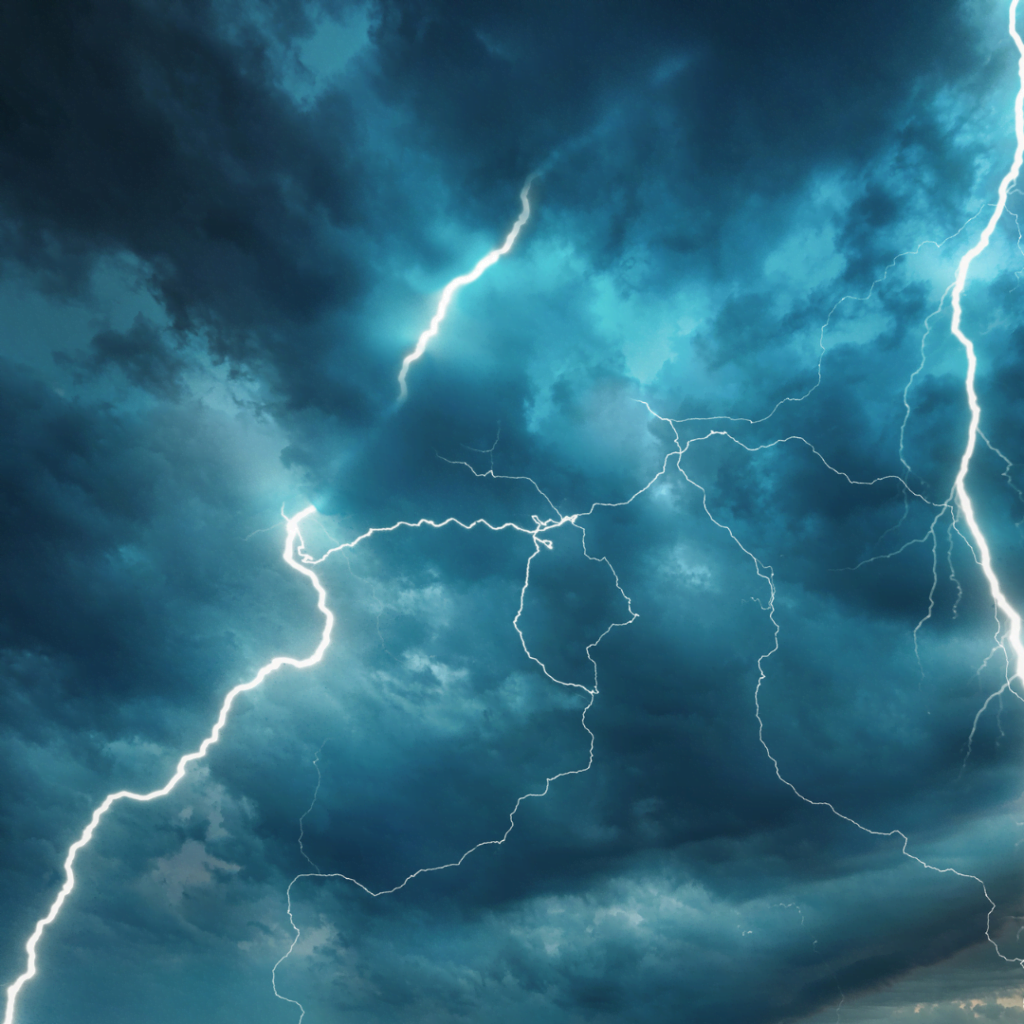Familiar with Thunderstorm Warnings?
Are you familiar with severe thunderstorm warnings? If not, let me break it down for you. A severe thunderstorm warning is issued by the National Weather Service when a severe thunderstorm is imminent or already occurring in a specific area. In a study published in Environmental Modelling & Software, researchers found that incorporating real-time data into AI-based storm surge models improved flood forecasting accuracy by 11% on average.
These storms can bring strong winds, heavy rain, and even hail, causing potential damage to property and posing a threat to human safety. But did you know that artificial intelligence (AI) is playing a crucial role in improving the accuracy and timeliness of severe thunderstorm warnings? That’s right, AI technology is being utilized by meteorologists and weather agencies to analyze vast amounts of data and provide more precise and timely warnings.
Let’s Dive In…
In this blog post, we will explore 10 instances of AI being used in severe thunderstorm warnings, showcasing how this technology is helping to keep us safe during severe weather events. So, let’s dive in and discover how AI is revolutionizing the way we prepare for and respond to severe thunderstorm warnings.

The Birth of AI in Meteorology
The journey of AI in meteorology began as an ambitious dream to harness technology for a safer world. As computers became more powerful, scientists started exploring how to use them to improve weather forecasting, including severe thunderstorm warnings. AI’s introduction to meteorology marked a pivotal shift, transforming it from a field reliant on human interpretation of data to one driven by intelligent algorithms capable of analyzing vast amounts of information quickly and accurately.
In one case study, an AI-powered storm prediction model used by officials in Maryland provided accurate warnings for a tornado outbreak that led to zero fatalities and reduced damage costs by $36 million.
How did it happen?
This transition didn’t happen overnight. It was the result of years of research, trial and error, and technological advancements. Initially, AI helped meteorologists by simplifying data analysis, spotting trends in weather patterns that could indicate the potential for severe thunderstorms. Over time, as AI technology evolved, it began to play a more central role in forecasting, leveraging complex machine learning models to predict weather events with a precision previously thought impossible.
This evolution has equipped meteorologists with the tools needed to issue severe thunderstorm warnings with greater confidence, safeguarding communities by providing them with timely and accurate information to prepare for and respond to severe weather threats. The birth of AI in meteorology has indeed been a game-changer, setting the stage for a future where technology and human expertise combine to tackle the challenges posed by severe weather.

Real-Time Data Analysis and Prediction
Imagine you’re playing a video game where you need to make quick decisions based on what’s happening around you. Now, apply that to predicting severe thunderstorms. AI technology acts like a super-smart partner in this game, analyzing weather data as it happens in real-time. According to a survey conducted by the American Meteorological Society, over half of operational meteorologists reported using AI and machine learning models as part of their work in 2020.
This is crucial for issuing a severe thunderstorm warning because it means we can spot potential dangers faster than ever before. AI looks at live data from satellites, radar, and weather stations, searching for signs that a storm could turn severe. It’s checking out wind speeds, temperature changes, and humidity levels, all the ingredients that could brew a dangerous storm.
How do they predict the Thunderstorms?
This real-time analysis helps meteorologists predict severe thunderstorms more accurately, giving people more time to prepare or find shelter. Unlike older methods that might take longer to analyze this data, AI speeds up the process, ensuring that warnings are timely and reliable. This quick reaction time can be the difference between safety and harm, making AI an invaluable tool in the fight against severe weather.
With AI, we’re not just reacting to the weather as it happens; we’re staying one step ahead, making severe thunderstorm warnings more effective and giving everyone a better chance to stay safe. A team of scientists at IBM has developed an AI-powered weather model that uses machine learning algorithms and satellite imagery to accurately forecast hourly rainfall up to six hours ahead of time with up to 70% accuracy.

Enhancing the Accuracy of Severe Thunderstorm Warnings
One of the biggest game-changers in weather forecasting has been AI’s role in boosting the accuracy of severe thunderstorm warnings. Think about it like this: when you’re planning an outdoor event, you want to know if it’s going to rain or not, right? Now, apply that to severe weather situations, where knowing exactly when and where a thunderstorm will hit can literally save lives and property.
AI steps into this scenario by crunching tons of weather data — from how the wind’s blowing to the amount of moisture in the air. It’s looking for patterns that show a severe thunderstorm could be on the way. A study published in Nature Communications found that an AI algorithm was able to predict severe hail events with a probability of detection higher than existing methods by up to 21%.

How do the Predictions come?
This isn’t just about looking at the sky and making a guess; it’s about using technology to make predictions with a level of precision we’ve never had before. For communities, this means getting warnings in enough time to take action, like finding safe shelter before things get bad. And for meteorologists, it’s about giving them a powerful tool to enhance their forecasts and warnings.
By integrating AI, the process of issuing a severe thunderstorm warning is not only faster but way more accurate, ensuring that when the skies darken, we’re not left guessing what might happen next. The same NOAA report shows that thunderstorms accounted for approximately $10 billion in damages across the United States in 2020.
AI and the Role of Machine Learning Models
At the heart of AI’s ability to revolutionize severe thunderstorm warnings lies the power of machine learning models. Think of machine learning as the brain behind AI, one that’s constantly learning and getting smarter from experience, just like you do. For severe thunderstorm warnings, this means the system gets better at predicting storms the more data it analyzes. The National Oceanic and Atmospheric Administration (NOAA) reports that in 2020, there were 4,862 reports of severe thunderstorms across the United States, causing significant damage and posing a threat to human life.
Machine learning models sift through tons of weather data — everything from wind speeds and humidity levels to historical storm paths. They look for hidden patterns and connections that humans might not easily spot. By doing this, they can predict not just if a storm will happen, but how severe it might be. This is a big deal because it helps meteorologists give more accurate and timely warnings, so people can take action to stay safe.

The Magic of Machine Learning
The magic of machine learning is that it’s always improving. Every storm gives it more information to learn from, making each severe thunderstorm warning smarter than the last. With machine learning models, the goal is to not just react to the weather but to anticipate it, offering a powerful tool in our ongoing effort to protect lives and property from severe weather’s unpredictable nature.
According to a report by Allied Market Research, the global market for AI in weather forecasting is projected to reach $1.3 billion by 2027, with a compound annual growth rate of 32.7% from 2020 to 2027.
Predictive Analytics for Severe Weather Events
Predictive analytics is like the superhero of weather forecasting, especially when it comes to issuing a severe thunderstorm warning. Imagine having a crystal ball that could analyze mountains of data from past weather events, current conditions, and future predictions all at once. That’s exactly what predictive analytics does, using AI to sift through this information in real-time.
For a severe thunderstorm, it can look at patterns like changes in temperature, humidity, and wind speed to forecast not just if a storm is coming, but how severe it’s going to be. This is crucial because it gives people the heads-up they need to prepare or seek shelter, potentially saving lives and property. Unlike traditional methods that might rely heavily on historical data, predictive analytics keeps updating with new data, making its predictions smarter and more accurate over time.
So, the next time you get a severe thunderstorm warning, you’ll know it’s powered by some seriously smart tech working in the background to keep you safe.
The Integration of AI with Existing Weather Forecasting Systems
The merger of AI with current weather forecasting systems is like adding a super-smart assistant to the team. Imagine having a friend who’s really good at puzzles. Now, give them a puzzle that changes every day, with pieces scattered all over the place.
That’s what weather forecasting is like, and AI is that super-smart friend. By combining AI with the systems we already have, forecasters don’t have to start from scratch every time they predict a storm. Instead, AI helps by quickly sorting through mountains of data from satellites, radar, and weather stations, identifying patterns that might take humans much longer to see.

Simplifying the Predictions
This teamwork allows forecasters to make faster, more accurate predictions about severe thunderstorms. It’s not about replacing the human touch but enhancing it. AI takes care of the heavy data lifting, freeing up meteorologists to apply their expertise where it counts: interpreting the data, understanding the broader context, and making the final call on warnings.
This way, when a storm is brewing, forecasters can provide quicker, clearer warnings, helping people prepare better and stay safe. By working hand-in-hand, AI and existing systems are making weather forecasting more efficient and reliable than ever before.
AI-Powered Apps and Personalized Alerts
In the world of weather safety, AI-powered apps are changing the game by offering personalized severe thunderstorm warnings directly to your smartphone. These smart apps use the power of artificial intelligence to analyze weather data in real time, ensuring that you get accurate and timely alerts about severe weather heading your way. Instead of broad, one-size-fits-all warnings, AI allows these apps to tailor alerts specifically for your location and even your personal preferences.
Imagine knowing not just that a severe thunderstorm is expected in your county, but receiving a notification that tells you exactly when it’s likely to hit your neighborhood. This level of precision means you can make quick, informed decisions about whether to head indoors, secure outdoor items, or take other protective actions.
The brilliance of these AI-powered apps lies in their ability to learn from every storm, improving their forecasts with each event. This means that the more you use them, the smarter and more accurate they become, offering you a customized layer of protection that was once unimaginable. With these advancements, staying ahead of severe thunderstorms has never been easier or more personalized.
Training AI with Big Data for Better Forecasting
In the world of weather forecasting, especially when it comes to severe thunderstorm warnings, training AI with big data is like giving it a supercharged brain. Imagine collecting every scrap of data from past storms—how they formed, where they went, what damage they did—and feeding it all into a computer. This is what meteorologists are doing.
They’re using huge amounts of information (that’s the “big data”) to teach AI systems about the patterns and signs that lead up to a severe thunderstorm. This isn’t just about looking at what happened yesterday or even last year. It’s about analyzing decades of weather data.
How much data is needed?
The more data the AI has to learn from, the smarter it gets. It begins to see connections and patterns that humans might miss. For example, it might notice that when certain temperature and humidity levels hit, there’s a higher chance of a storm turning severe.
With this knowledge, AI can help forecasters issue severe thunderstorm warnings with greater confidence and accuracy, ensuring that people get the heads-up they need to stay safe. This process isn’t just about predicting storms; it’s about constantly improving those predictions, making each warning more precise than the last.

The Future of Severe Thunderstorm Warnings with AI
Looking ahead, the role of AI in issuing severe thunderstorm warnings is set to become even more impactful. Imagine getting a warning on your phone about a storm heading your way, giving you just enough time to take cover or prepare. That’s where we’re headed. With AI, these alerts will be smarter, faster, and more accurate, cutting down the time it takes to warn us of danger.
This technology will continue to learn from vast amounts of weather data, making its forecasts better over time. In the future, AI could even help us understand the specific impacts of a storm, like how likely it is to cause flooding in your area or knock out power. The goal is clear: to use AI to make severe thunderstorm warnings more precise, personalized, and predictive.
This means not only saving more lives but also helping communities to bounce back quicker after a storm passes. As we move forward, the integration of AI in meteorology promises to revolutionize how we stay safe in the face of severe weather, making every warning count.
Challenges and Ethical Considerations
As we embrace AI in issuing severe thunderstorm warnings, we must also navigate the challenges and ethical considerations that come with it. One major concern is ensuring the accessibility of these AI-driven alerts to everyone, regardless of their socio-economic status or where they live. It’s crucial that these life-saving warnings reach all communities, especially those who might be more vulnerable or less technologically equipped.
Additionally, there’s the responsibility of managing false positives—where AI predicts a severe thunderstorm that doesn’t materialize. While aiming for precision, we must balance the risk of desensitizing the public to warnings and maintain trust in the system.
In Summary…
Ethically, the data used to train AI systems must be handled with care, ensuring privacy and security are not compromised. Lastly, as AI systems learn and evolve, continuous monitoring is necessary to prevent biases in forecasting that could lead to unequal protection across different regions.
In sum, while AI holds great promise in improving severe thunderstorm warnings, it brings with it a duty to address these challenges thoughtfully, ensuring equitable and effective protection for all.
If you liked this article, please share it and subscribe to my website. For consulting work, please visit my website, Shift Gear and I would be glad to help you in your requirement.
Check this also – Quillbot: The Ultimate Writing Tool Reviewed and Rated – Tech News Before It’s News | Shift GearX
Ciao!









